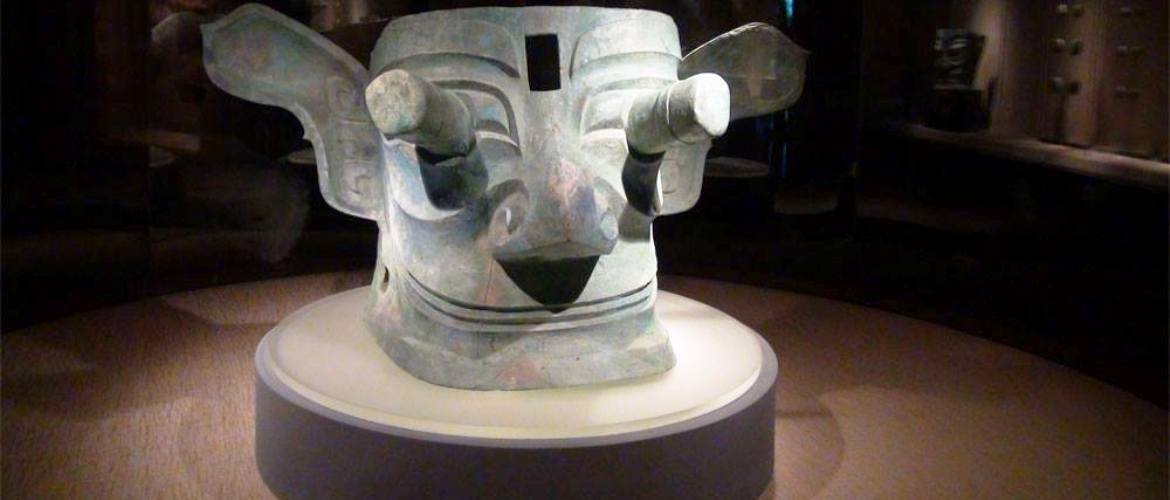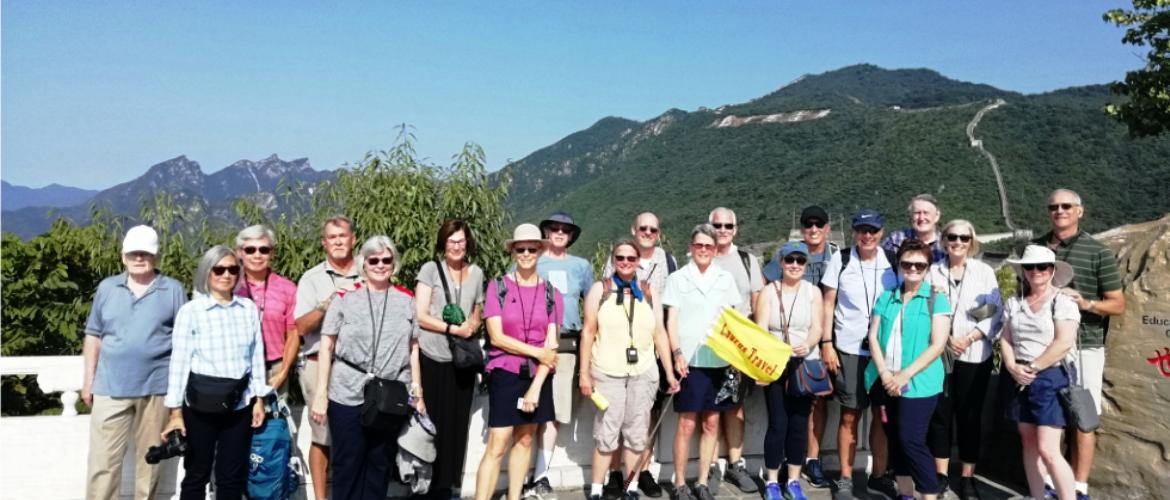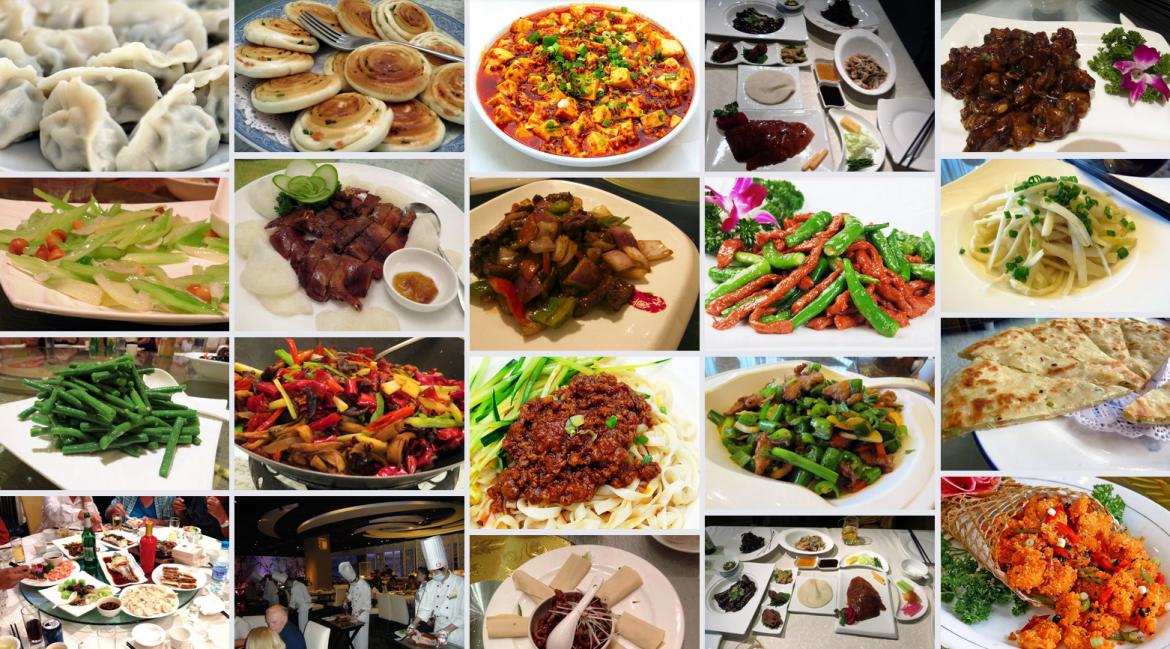
Beijing – Xi’an – Chengdu – Shanghai – Wuhan – Guilin – Hong Kong
This luxury china travel package presents a sharp contrast between the old and new, from historic sites in Beijing and Xi’an to the hustle and bustle of Shanghai and Hong Kong. Trip highlights include the Forbidden City and the Great Wall in Beijing, the Museum of Terracotta Warriors and Horses in Xi’an, the Giant Panda Research Base in Chengdu, and a day cruise on picturesque Li River in Guilin.
Important Features
- Small group size – average 15, maximum 20.
- Expert local guides handpicked by company owners.
- Inter-city travel by high-speed train except for one city pair.
- No annoying forced shopping of any kind.
- Quality meals at non-tourist restaurants.
- Complimentary bottled water during group activities.
- Complimentary in-room Wi-Fi in all hotels.
- Visit to chambers in Forbidden City that most tour operators leave out.
- Great Wall visit at Mutianyu including cable car rides.
- Day hike at Longji terrace rice fields.
Options Available
- Peking Opera show with dinner in Beijing
- Tang Dynasty cultural show with dinner in Xi’an
- Traditional face mask changing performance with dinner in Chengdu
- Half-day immersive tea farm visit in Guilin

ITINERARY
Meal Code: B = breakfast / L = lunch / D = dinner
Day 1/Thu: Departing for Beijing
The trip starts with your transpacific flight departing from a city of your choice. You’ll lose a day upon crossing the International Date Line.
Day 2/Fri: Arrival in Beijing
Meet the driver on arrival for transfer to the hotel. You’ll have the remainder of the day at leisure. The guide will get in touch with you tonight.
Day 3/Sat: Beijing (B/L/D)
Beijing is China’s capital, a major cultural and educational hub with a population of 22 million. Known for its opulent palaces, temples, and historic walls, it is the country’s most visited city.
Today’s itinerary begins with a visit to the Forbidden City, home to emperors from the Ming and Qing Dynasties. This UNESCO World Heritage Site, completed in 1420, consists of 980 buildings spread across 72 hectares. It exemplifies traditional Chinese palatial architecture and has influenced cultural and architectural developments in East Asia and elsewhere.
Next, we visit Tian’anmen Square, one of the world’s largest public squares and a focal point of China’s modern history. Said to be the largest public plaza in the world, Tian’anmen Square has the capacity to hold one million people.
In the afternoon, explore the Temple of Heaven, another UNESCO site, where emperors once conducted grand sacrifices.
If you’re interested in shopping, the world famous Hongqiao Pearl Market is near near Temple of heaven is recommended. You can ask the guide to drop you off there. However, you’ll need to get back to the hotel by taxi, which costs less than 10 US dollars.
We end the day with a traditional dinner featuring Beijing’s famous roast duck.
Day 4/Sun: Beijing (B/L)
After an early breakfast we embark on a full-day excursion to the legendary Great Wall at Mutianyu, 75 km northeast of the city.
Zigzagging over 6,000 kilometres from east to west along the undulating mountains, the Great Wall was built to hold off tribal invaders from the north. As history shows, the Wall failed the Chinese rulers miserably, especially in the case of Kublai Khan whose men swept across China from the Mongolian steppe, thus marking the beginning of the Yuan Dynasty (1279-1368).
Construction of the earliest sections of the Wall started in the 7th century BCE. A major renovation started with the founding of the Ming Dynasty in 1368 and took 200 years to complete. The wall we see today in Beijing is almost exactly the result of this effort.
Day 5/Mon: Beijing – Xi’an (B/L/D)
We begin our sightseeing today with a visit to a traditional hutong neighbourhood. Hutong refers to an ancient alleyway with siheyuan or ”4-sided courtyard house” on both sides. The name hutong dates back to the Yuan Dynasty (1279 – 1368 CE). According to some experts, the word originated from the Mongolian language, in which it is pronounced as hottog and means “well.” In ancient times, people tended to gather and live around wells. Therefore, the original meaning of hutong should be “a place where people live around”.
Next on our schedule is the Summer Palace, a well preserved UNESCO World Cultural Heritage Site. The imperial resort was first named Garden of Clear Ripples, which was burnt down by the allied forces of Great Britain and France in 1860 at the end of the Second Opium War (referred to as Arrow War by the British). Reconstruction started 25 years later and was completed in 1895 when the name was changed to Yi He Yuan (Garden of Good Health and Harmony). The design gives prominence to Longevity Hill, as well as Kunming Lake south of the hill. The sprawling complex covers an area of 290 hectares and the buildings inside consist of over 3,000 bays.
We travel to Xi’an by high-speed train (#G87, 14:00/18:23). The 4-hour-23-minute rail journey through fertile farmland dotted with villages provides the visitor with an excellent way to enjoy the beautiful countryside. The track we travel on between Beijing and Zhengzhou is part of the new 2,298 km high-speed railway linking Beijing and subtropical Guangzhou and is also the longest high-speed rail line in the world. In the past 20 years China has been on a building spree expanding the country’s rail network and upgrading existing railways. Its new high-speed rail service rivals France’s TGV and Japan’s “shinkansen” in terms of safety, speed, comfort and punctuality.
Day 6/Tue: Xi’an (B/L)
With a history going back over 3,000 years, Xi’an served as China’s capital of several ruling dynasties including the Han (206 BCE – 220 CE) and the Tang (618 – 907). It is home to the famous Terracotta Army and the eastern terminus of the ancient Silk Road – a network of trade routes connecting China proper with regions as far as the Mediterranean beginning in the Second Century BCE.
We spend the morning visiting the Terracotta Army. Built on the excavation site, the museum is located 30 km east of the city. Designed to follow the first emperor of the Qin Dynasty (221-206 BCE) into eternity, the Terracotta Army represents one of the greatest archeological discoveries of the 20th century.
After lunch we return to the city for a stroll on the ancient city wall. Declared a national treasure by the State Council in 1961, the wall (first built in 1370) encircles an area of 14 square kilometres. It runs 13.7 kilometres long and measures 12 metres in height with a thickness at the base between 15 to 18 metres.
Day 7/Wed: Xi’an – Chengdu (B/L/D)
Morning sightseeing begins at Shaanxi Provincial Museum. The modern, well-organized museum was completed in 1992 and traces the history of Xi’an from prehistory to the Qing dynasty (1644-1912). The extensive galleries and exhibitions offer the visitor an excellent introduction to the area that greatly improves understanding of the numerous historical sites in and around the city.
We then visit the grand mosque in the old town centre and the adjacent Muslim bazaar. The mosque was established in the 8th century but the majority of the complex was constructed in the Ming Dynasty (1368-1644). It was further expanded in the Qing Dynasty. Unlike most mosques in Middle Eastern or Arab countries, this mosque is completely Chinese in architectural style. It has neither domes nor traditional minarets.
This afternoon we ride the bullet train (G1975, 14:34/18:25) to Chengdu, the capital of populous Sichuan Province. The ancient city has a population of 14 million with half of that within the urban centre and the remainder in the surrounding districts. The fertile Chengdu Plain, on which Chengdu is located, is also known as “Country of Heaven”, a phrase also often translated as “The Land of Abundance”. The discovery of the Jinsha site suggests the area of Chengdu had become the centre of the Bronze Age Sanxingdui culture around the time of the establishment of the state of Shu, prior to its annexation by Qin in 316 BCE.
Day 8/Thu: Chengdu (B/L)
Morning sightseeing takes place at Chengdu Research Base of Giant Panda Breeding. The giant panda, unrelated to the red or lesser panda, is a bear native to south central China, living in mountainous regions. It is easily recognized by the large, distinctive black patches around its eyes, over the ears, and across its round body. Though it belongs to the order Carnivora, the panda’s diet is over 99% bamboo. The giant panda has an insatiable appetite for bamboo. A typical panda eats half the day – a full 12 out of every 24 hours – and relieves itself dozens of times per day. Giant pandas are solitary creatures. They have a highly developed sense of smell that males use to avoid each other and to find females for mating in the spring. After a five-month pregnancy, females give birth to a cub or two, though they cannot care for both twins. The blind infants, born fully white, weigh only 5 ounces (142 grams) at birth and cannot crawl until they reach three months of age.
The giant panda is a conservation-reliant species. Although no longer considered by the International Union for Conservation of Nature (IUCN) to be Endangered, the species is still classified as Vulnerable. Recent statistics (late 2022) shows 637 pandas living in captivity with most of them inside China. The most authoritative estimate as of late 2022 puts the number of giant pandas living in the wilderness at 1864.
We spend most of the afternoon at Jinsha Museum. In February 2001, construction workers chanced upon a significant archaeological discovery in modern China. The discovery led to the naming of Jinsha culture (1200 – 650 BCE) and a museum was erected at the excavation site. Jinsha culture flourished around 1000 BCE and shares similarities in burial objects with the Sanxingdui site located 50 km from Chengdu. Objects made of ivory, jade, bronze, gold and stone were unearthed at the site. Unlike the site at Sanxingdui, Jinsha did not have a city wall. Jinsha culture is believed to be a final phase of Sanxingdui civilization and represents a relocation of the political center in the ancient Shu Kingdom.
Day 9/Fri: Chengdu – Shanghai (B/L)
Free morning to explore on your own.
Afternoon sightseeing after lunch includes Wang Jiang Lou Park and a typical local tea house. Wangjianglou means “river-overlooking tower” and the park is so named because of the ancient pagoda-shaped wooden tower onsite. The beautiful little park dotted with verdant bamboo groves has long been a favourite spot among locals for leisure.
We fly to Shanghai late in the day.
Day 10/Sat: Shanghai (B/L/D)
We begin our day with a visit to Jade Buddha Temple located in an old neighbourhood. We then walk the famous Bund – a waterfront promenade with a riveting history.
After lunch, we stroll the historical People’s Park and adjacent People’s Square in the heart of the city. Originally part of the Shanghai Race Club first established in 1850, the park and the square are surrounded by world-class museums and shops, which attract millions of visitors each year.
We wrap up the day’s sightseeing with a tour of the exquisite Yu Garden in the old town centre.
Day 11/Sun: Shanghai (B)
Free day to explore on your own.
If you are interested in art and history, Shanghai Museum would be a great place to spend half a day. This museum houses a huge collection of precious national treasures. Shanghai Jewish Refugees Museum and Nanwaitan Fabric Market (high-end tailor shops) are also recommended.
Optional Suzhou Day Tour
After breakfast we ride the high-speed train (30-40 minutes) to Suzhou, an ancient city most famous for its gardens, ancient canals and silk industry. In the late 13th century a Venetian named Marco Polo visited Suzhou and was very impressed by what he saw. He vividly described the prosperous silk industry and dubbed Suzhou “Venice of the East” due to the small waterways crisscrossing the city.
Our full-day schedule takes in the historic Tiger Hill, Humble Administrator’s Garden, North Pagoda, a short canal cruise. We return to Shanghai by train in the afternoon.
The all-inclusive price with lunch starts from US$250 per person and requires a minimum of 2 participants to operate.
Day 12/Mon: Shanghai – Wuhan (B)
After a leisurely breakfast we ride the high-speed train to Wuhan (5 hours).
Wuhan is the capital of Hubei Province and a powerful economic engine in central China. A pivotal hub of transportation, the sprawling city straddles the Yangtze. It became known as Wuhan in 1927 when Wuchang, Hanyang and Hankou were amalgamated. The city contains many beautiful lakes and parks including expansive East Lake.
We visit the Qingchuan Pavilion and a food market in the afternoon.
Day 13/Tue: Wuhan – Guilin (B/L/D)
Our first stop this morning is Hubei Provincial Museum. If we are lucky, we may get to watch a live performance featuring a set of bronze chime bells replicated from originals made two and half millennia ago. The museum visit is followed by a stroll by scenic East Lake nearby.
After an early lunch we board the high-speed train G435 (13:13/18:27) for Guilin. A small city by Chinese standard, Guilin has long been renowned for its unique scenery. The name Guilin literally means “forest of sweet osmanthus”, owing to the large number of fragrant sweet osmanthus trees in the city.
Day 14/Wed: Guilin (B/L)
We begin today with a five-hour cruise down the Li River. The 83 km stretch of the river between Guilin and Yangshuo affords breathtaking scenery as the river snakes through tall karst mountains, gigantic bamboo sprays, and picturesque villages — sights that have inspired countless poets and painters for generations.
We disembark in Yangshuo after lunch on board and drive back to Guilin. We wrap up the day with a quick tour of Fubo Hill (elevation 63 metres) located 2km from the hotel. Walking back to the hotel along Li River is a perfect way to soak in the beauty of the city.
Day 15/Thu: Guilin (B/L)
Enjoy a full-day hiking excursion to the terraced rice fields in Longji. Located 80 km (2 hours drive) to the north of Guilin, Longji, meaning dragon back, is famous for its terraced rice fields. Because the villages at Longji are in the jurisdiction of Longsheng County, the tourist attraction is often collectively referred to as Longsheng Terraced Fields. The scenery is arguably at its best in early May during transplanting and in late September to mid-October when the fields turn golden.
Built by local farmers of different ethnic groups from Yuan Dynasty (1271-1368) to Qing Dynasty (1644-1912), the mountainous fields cover a total area of 66 square kilometres, rising between 300 meters and 1,100 metres above sea level.
Optional Tea Farm Visit
If time permits and for a nominal fee, we can arrange a late afternoon visit to Guilin Tea Science and Research Institute, subject to a minimum of 6 participants. Founded in 1956, the state-owned institute has an experimental tea farm covering an area of 42 hectares and boasts 250 species of tea plants. The predecessor of the institute was said to be one of the tea suppliers to the imperial court during the Ming Dynasty. The farm sits on fertile soil ideal for tea growing. During harvesting season, the farm employs 150 workers full time to pick tea leaves. Each year the institute produces around 42 tons of organically grown tea of different flavours.
Day 16/Fri: Guilin – Hong Kong (B)
Free morning to explore on your own. We board the high-speed train to Hong Kong (3 hours) in the afternoon.
Hong Kong (meaning “fragrant harbour”) is one of the two special administrative regions of the People’s Republic of China, along with Macau. Comprising more than 260 islands, the territory is located on the eastern side of the Pearl River Delta, bordering Guangdong Province in the north and facing the South China Sea in the east, west and south. Hong Kong was a dependent territory of the United Kingdom from 1842 until the transfer of sovereignty to the People’s Republic of China in 1997. The Sino-British Joint Declaration and the Basic Law of Hong Kong stipulate that Hong Kong operate with a high degree of autonomy until at least 2047, fifty years after the transfer. Under the policy of “one country, two systems”, the Central People’s Government is responsible for the territory’s defense and foreign affairs while Hong Kong maintains its own legal system based on English common law, police force, monetary system, customs policy, immigration policy, and delegates to international organizations and events.
Day 17/Sat: Hong Kong (B/L)
Our morning sightseeing in Hong Kong begins with a ferry ride across Victoria Harbour from Tsim Sha Tsui to Central. The heart of Hong Kong’s business district, Central is home to the regional headquarters of many multinational financial services corporations. Consulates general and consulates of many countries are also located in this area, as is the government of Hong Kong.
We then proceed to the top of Victoria Peak. Also known as Mount Austin or The Peak among locals, Victoria Peak is located in the western half of Hong Kong Island with an altitude of 552 meters (1,811 feet). The peak offers sweeping views over Central, Victoria Harbour and the surrounding islands.
We proceed to our farewell luncheon after a brief stop at Repulse Bay – one of the most expensive residential areas in the world.
After lunch, we spend the rest of the day exploring on our own. Feel free to ask your guide for advice on what to do.
Day 18/Sun: Returning Home (B)
Your unforgettable tour concludes today. You can take a taxi or the Airport Express Train to the airport for your return flight. Couples are better off going by taxi, which costs around HK$300 equivalent to US$40 or less.

| City | Night | Hotel | Category |
| Beijing | 3 | New Otani Chang Fu Gong | luxury |
| Xi’an | 2 | Sheraton Xi’an North City | luxury |
| Chengdu | 2 | Chengdu Taihe | luxury |
| Shanghai | 3 | Amara Signature Shanghai | luxury |
| Wuhan | 1 | New World Hotel | luxury |
| Guilin | 3 | Sheraton Guilin | luxury |
| Hong Kong | 2 | Harbour Grand Kowloon | luxury |
Dates & Prices
Prices per person based on double occupancy. See Terms & Conditions for cancellation penalty.
| Depart (Thu) |
Return (Sun) |
Land Only* CA$/US$ |
Single Supplement CA$/US$ |
| 2025 | |||
| 03-Jul | 20-Jul | $6510/$4650 | $1960/$1400 |
| 10-Jul | 27-Jul | $6510/$4650 | $1960/$1400 |
| 17-Jul | 03-Aug | $6510/$4650 | $1960/$1400 |
| 24-Jul | 10-Aug | $6510/$4650 | $1960/$1400 |
| 31-Jul | 17-Aug | $6510/$4650 | $1960/$1400 |
| 07-Aug | 24-Aug | $6510/$4650 | $1960/$1400 |
| 14-Aug | 31-Aug | $6510/$4650 | $1960/$1400 |
| 21-Aug | 07-Sep | $6650/$4750 | $2100/$1500 |
| 28-Aug | 14-Sep | $6790/$4850 | $2100/$1500 |
| 04-Sep | 21-Sep | $6930/$4950 | $2170/$1550 |
| 11-Sep | 28-Sep | $6930/$4950 | $2170/$1550 |
| 09-Oct | 26-Oct | $7070/$5050 | $2310/$1650 |
| 16-Oct | 02-Nov | $7070/$5050 | $2310/$1650 |
| 23-Oct | 09-Nov | $7070/$5050 | $2310/$1650 |
| 30-Oct | 16-Nov | $6860/$4900 | $2310/$1650 |
| 06-Nov | 23-Nov | $6650/$4750 | $2310/$1650 |
| 2026 | |||
| 05-Mar | 22-Mar | $6650/$4750 | $2310/$1650 |
| 12-Mar | 29-Mar | $6650/$4750 | $2310/$1650 |
| 19-Mar | 05-Apr | $6790/$4850 | $2450/$1750 |
| 26-Mar | 12-Apr | $6790/$4850 | $2450/$1750 |
| 02-Apr | 19-Apr | $6790/$4850 | $2450/$1750 |
| 09-Apr | 26-Apr | $6790/$4850 | $2450/$1750 |
| 07-May | 24-May | $6790/$4850 | $2450/$1750 |
| 14-May | 31-May | $6790/$4850 | $2450/$1750 |
| 21-May | 07-Jun | $6790/$4850 | $2450/$1750 |
| 28-May | 14-Jun | $6790/$4850 | $2450/$1750 |
| 04-Jun | 21-Jun | $6705/$4790 | $2365/$1690 |
| 11-Jun | 28-Jun | $6705/$4790 | $2365/$1690 |
| 18-Jun | 03-Jul | $6705/$4790 | $2365/$1690 |
| 25-Jun | 10-Jul | $6705/$4790 | $2365/$1690 |
* Land Only price does NOT include international airfare. Please contact us for a fare quote.
|
What the tour price includes:
|
What the tour price excludes:
See Terms & Conditions for more information. |
